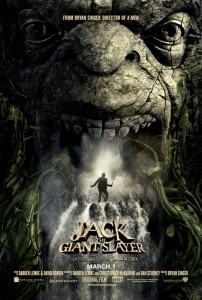I moved to Vancouver at the end of August 2011 to start a 12-month contract at MPC. As soon as I arrived, I started working on Jack The Giant Slayer (or Jack The Giant Killer, as it was called back then).
Most of the work for the movie was split between two VFX houses. MPC was responsible for rendering the beanstalk, while Digital Domain Vancouver worked on the giants.
Jack was shot natively in stereo using two Red Epics mounted in a mirror rig. These rigs are never perfect and there are always a range of discrepancies between the left and right eyes. Common issues were colour differences introduced by the mirror, differences in specular reflections and slight vertical alignment issues.
Our first job in the comp department was to fix these discrepancies for each plate. At MPC, they call this step ‘stereo triage’. Even with the Ocula plug-in for Nuke, this was not a trivial task. We were using version 2 of Ocula for most of the project and, like many plug-ins that offer ‘magic solutions’, it rarely got you more than 80% of the way.
We had several different template scripts that used Ocula in different ways to correct colour differences. It was rare that one setup would work for the whole shot, so we would usually have to mix and match different techniques and different instances of Ocula with different settings. Occasionally we would even have to resort to rebuilding parts of one eye to match the other eye, using rig removal techniques.
Later in the project, The Foundry released version 3 of Ocula and it was a massive improvement. In some cases, shots that had taken a week with version 2 could be done in a day.
Once the triage was done, we could start on compositing.
Our main sequences involved the characters climbing the beanstalk. There were small sections of the beanstalk built on a bluescreen stage, which the actors were filmed on. We had to pull keys from the blue screen and then add CG renders of the beanstalk to extend it off into the distance. We also had to add matte paintings of clouds, sky, the giant’s land and the ground below.
This was the first time I had composited native stereo footage. Other than the triage, I was pleasantly surprised at how straight forward it was.






Latest Comments